#free wpa posters
Text





Did you know you can use these WPA posters absolutely free. These posters were created for the Federal Works Progress Administration. These are great examples of mid-century graphic design and would be great for any design projects you have that need a retro feel. They're also great for inspiration.
You can find these WPA posters and many many more on the Library of Congress website.
#free clip art#free clipart#free commercial clip art#free commercial use art#graphic design#graphic designers#typography#illustrators#typographers#retro graphic design#vintage graphic design#vintage posters#retro posters#wpa posters#free wpa posters
21 notes
·
View notes
Photo

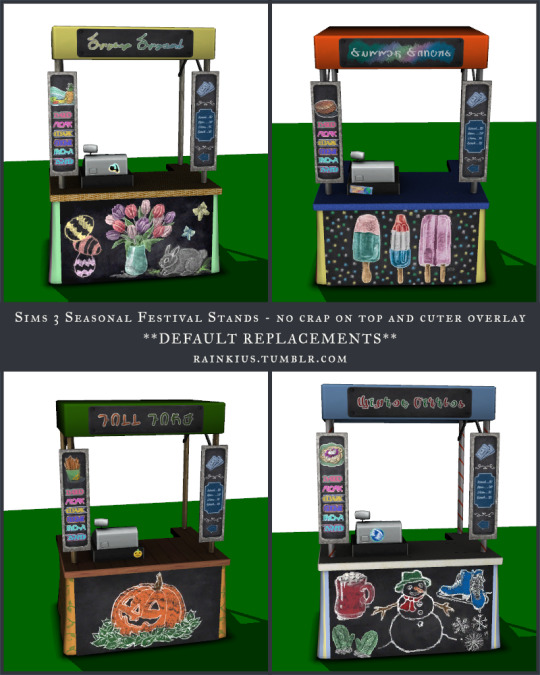
Sims 3 CC dump - Downloads & more below the cut
Festival Food Stands - **DEFAULT REPLACEMENTS** Stupid thing on the top of each chopped off (pie, cup, etc) and the multiplier fixed so there is no shadow remaining. Also redid the overlays for each season to be cuter. I did NOT change the presets, so they are exactly as ugly as they were in vanilla, lol. I don’t remember if I did a custom thumbnail. I doubt it. DOWNLOAD
Most of the stuff I’ve made for TS3 over the years doesn’t have previews or anything - and the few that do, most are lazy TSRW previews. I don’t think I’ll be loading up TS3 any time soon to take more previews, so there is some random stuff in there. Anything pictured in this post has its link below it.
P.S. The “Farewell” thing is just supposed to be kind of funny/light hearted - While I’ve been playing TS4 lately, there are parts of TS3 I miss. I might go back to it.
𝕊𝕚𝕞𝕤 𝟛 𝔻𝕠𝕨𝕟𝕝𝕠𝕒𝕕 𝔽𝕠𝕝𝕕𝕖𝕣

WW1 and WPA Posters - On a painting from SP01. All of the swatches are included in folders in the zip file. 5 different package files (separated by theme), with 90+ variations. Total of Source: Library of Congress DOWNLOAD

Complete overhaul of the kid oven from base game. It does have a custom thumbnail. **This is a DEFAULT REPLACEMENT** DOWNLOAD
Residential lots - Originally made for contests on a forum. All of the houses are CC free, except for decrapped store content. The zip files include additional preview pictures.

DOWNLOAD
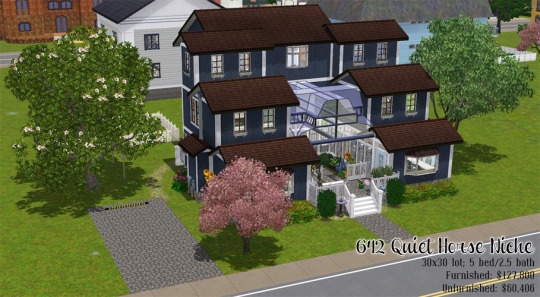
DOWNLOAD

DOWNLOAD
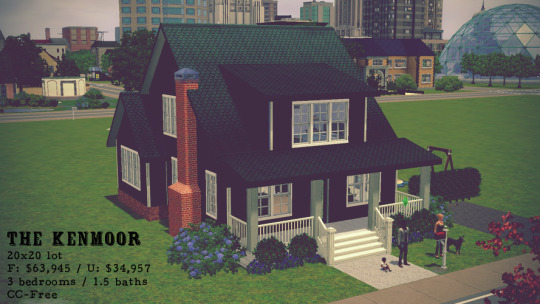
DOWNLOAD
Not pictured:
A bunch of default replacements. Most were to give items better masks and additional channels.
42 patterns in package format - Most are from WoW, and they are usually stone or fabric. (Intended to add just a little texture) There are a couple of patterned ones.
If I find anything else, I will upload there and maybe post something :)
309 notes
·
View notes
Text
hey so i was looking around for art books that collected the WPA posters (and similar posters from that era) for an idea i'm working on and i came across this site which has an archive of a ton of them for free (they also have a book, which i bought b/c i like physical shit- they're sold out on the website but you can find it through local bookstores, libraries and alibris), in case anyone else needs:
https://www.postersforthepeople.com/
the archive images aren't the biggest unfortunately, but they do have a lot of info about each poster so you can find the one you want (or order a print through them). it was useful to me anyway
5 notes
·
View notes
Text

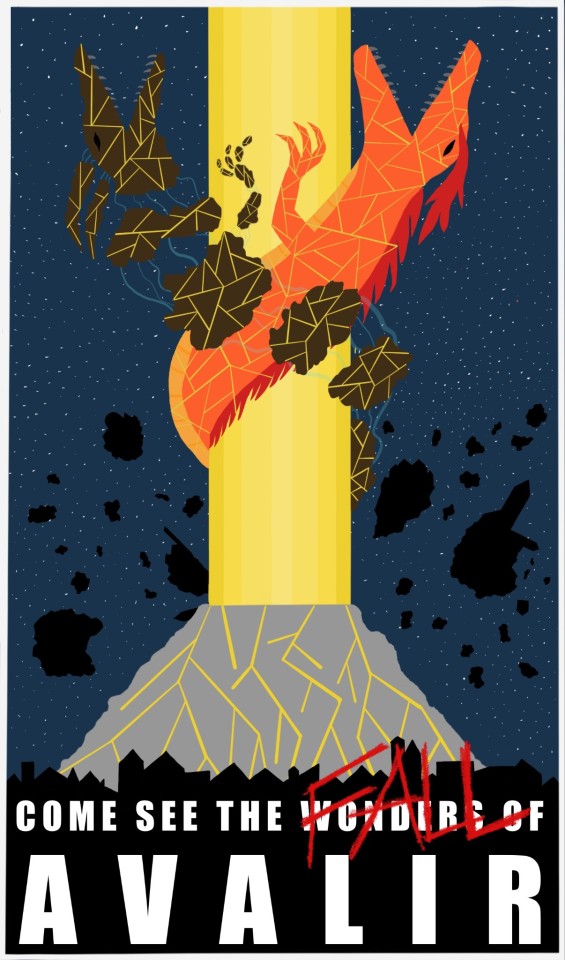
Experience the opulence follies of the City of Crowns.
Art by me! EXU Calamity has lived rent free in my head since it ended and I wanted to do this piece in the style of the old WPA posters!
104 notes
·
View notes
Text
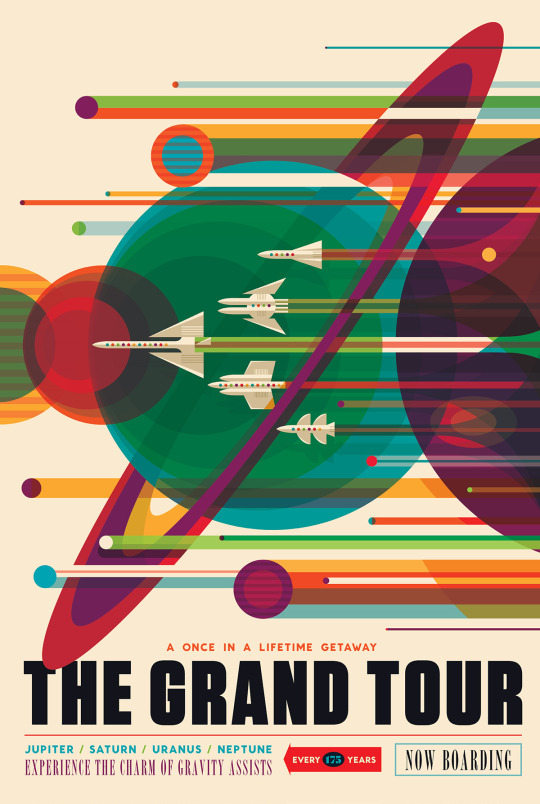
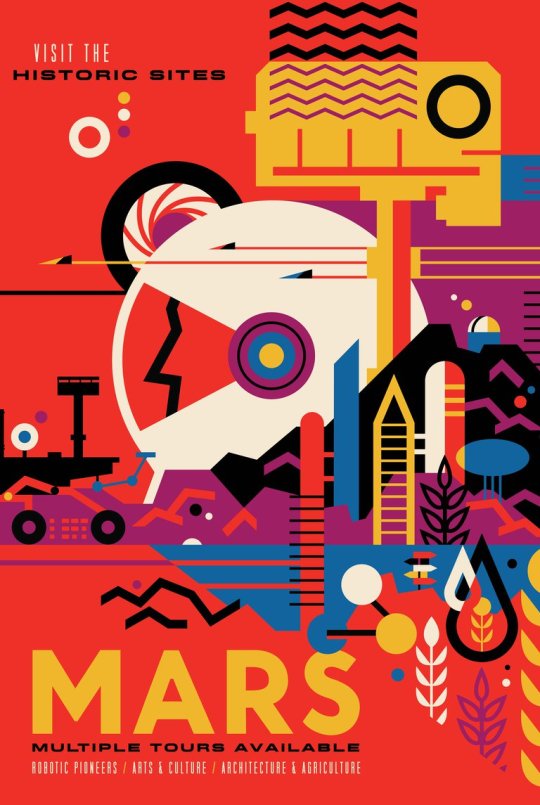
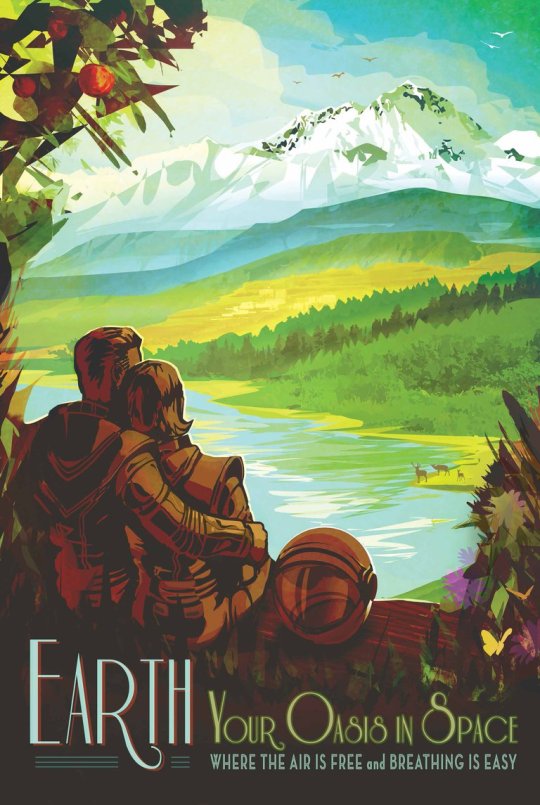
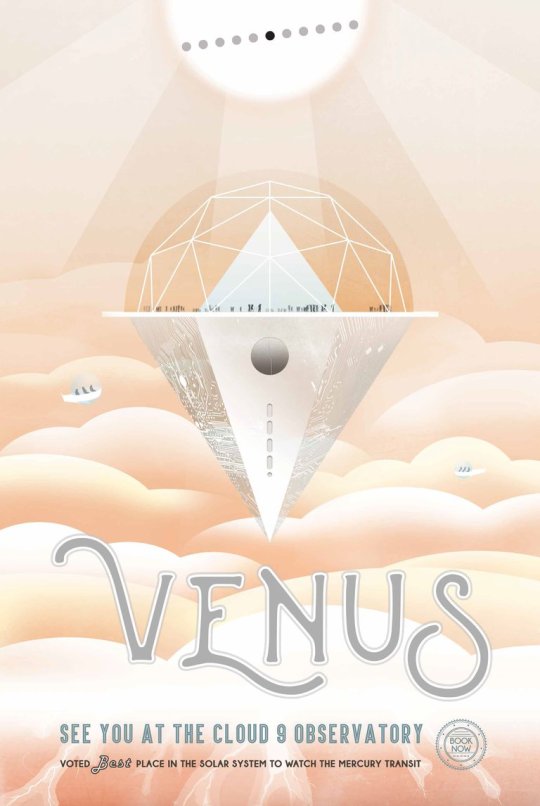
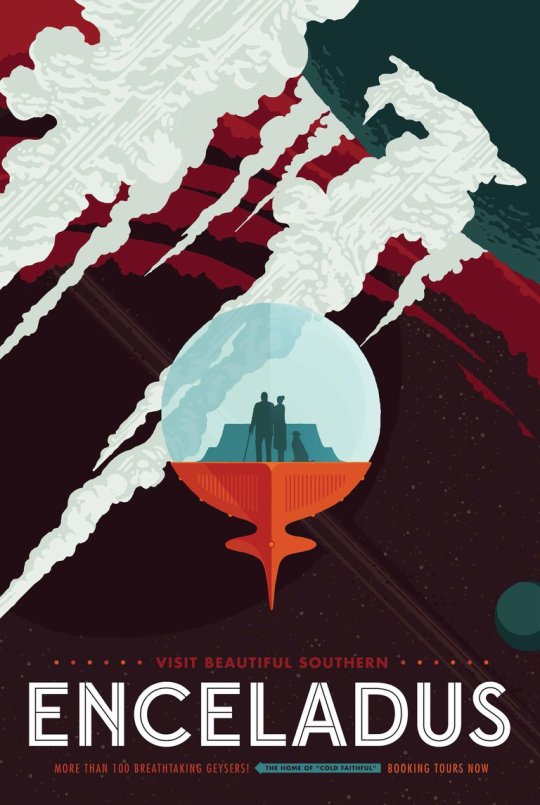


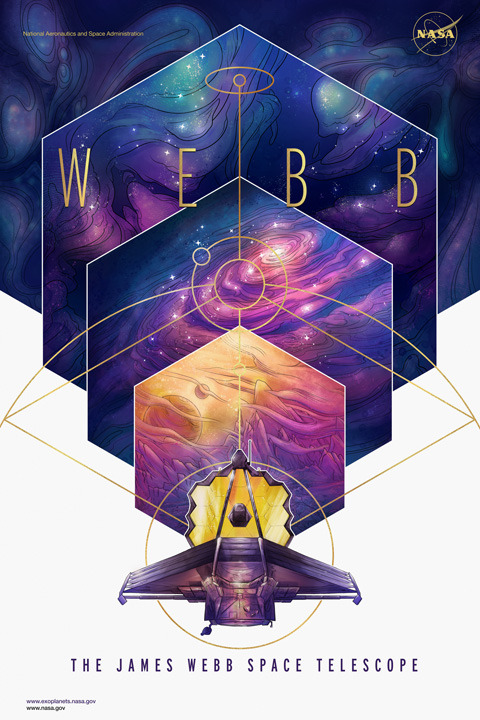

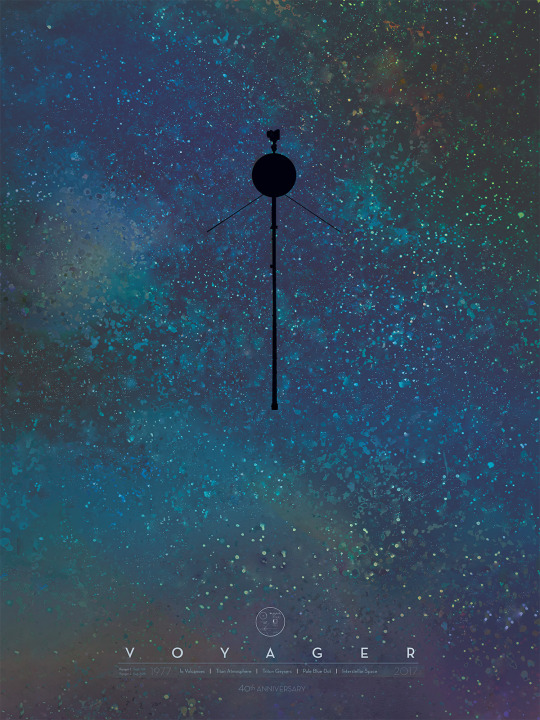
VISIONS OF THE FUTURE
Background: A creative team of visual strategists at JPL, known as "The Studio," created the poster series, which is titled "Visions of the Future." Nine artists, designers, and illustrators were involved in designing the 14 posters, which are the result of many brainstorming sessions with JPL scientists, engineers, and expert communicators. Each poster went through a number of concepts and revisions, and each was made better with feedback from the JPL experts.
David Delgado, creative strategy: The posters began as a series about exoplanets -- planets orbiting other stars -- to celebrate NASA's study of them. (The NASA program that focuses on finding and studying exoplanets is managed by JPL.) Later, the director of JPL was on vacation at the Grand Canyon with his wife, and they saw a similarly styled poster that reminded them of the exoplanet posters. They suggested it might be wonderful to give a similar treatment to the amazing destinations in our solar system that JPL is currently exploring as part of NASA. And they were right! The point was to share a sense of things on the edge of possibility that are closely tied to the work our people are doing today. The JPL director has called our people "architects of the future." As for the style, we gravitated to the style of the old posters the WPA created for the national parks. There's a nostalgia for that era that just feels good.
Joby Harris, illustrator: The old WPA posters did a really great job delivering a feeling about a far-off destination. They were created at a time when color photography was not very advanced, in order to capture the beauty of the national parks from a human perspective. These posters show places in our solar system (and beyond) that likewise haven't been photographed on a human scale yet -- or in the case of the exoplanets might never be, at least not for a long time. It seemed a perfect way to help people imagine these strange, new worlds.
Delgado: The WPA poster style is beloved, and other artists have embraced it before us. Our unique take was to take one specific thing about the place and focus on the science of it. We chose exoplanets that had really interesting, strange qualities, and everything about the poster was designed to amplify the concept. The same model guided us for the posters that focus on destinations in the solar system.
Lois Kim, typography: We worked hard to get the typography right, since that was a very distinctive element in creating the character of those old posters. We wanted to create a retro-future feel, so we didn't adhere exactly to the period styles, but they definitely informed the design. The Venus poster has a very curvy, flowy font, for example, to evoke a sense of the clouds.
Creative Strategy: Dan Goods, David Delgado
Illustrators: Liz Barrios De La Torre (Ceres, Europa); Stefan Bucher (Jupiter Design); Invisible Creature (Grand Tour, Mars, Enceladus) ;Joby Harris (Kepler 16b, Earth, Kepler 186f, PSO J318.5-22, Titan); Jessie Kawata (Venus); Lois Kim (Typography for Venus and Europa); Ron Miller (Jupiter Illustration)
Credit: NASA/JPL-Caltech
Free hi-res download poster designs of these and more from Nasa, credits and source text at the links:
VISIONS OF THE FUTURE: https://www.jpl.nasa.gov/galleries/visions-of-the-future
VOYAGER: https://voyager.jpl.nasa.gov/downloads
Bonus freebies - GALAXY OF HORRORS : https://exoplanets.nasa.gov/alien-worlds/galaxy-of-horrors/
:read more:
1. NASA's Voyager mission took advantage of a once-every-175-year alignment of the outer planets for a grand tour of the solar system. The twin spacecraft revealed details about Jupiter, Saturn, Uranus and Neptune – using each planet's gravity to send them on to the next destination. Voyager set the stage for such ambitious orbiter missions as Galileo to Jupiter and Cassini to Saturn. Today both Voyager spacecraft continue to return valuable science from the far reaches of our solar system.
Delgado: The Grand Tour is the route the Voyager 2 spacecraft took to visit all four outer planets. We imagined this would be something people might want to repeat, since it's a flight plan that's possible every 175 years or so, when the outer planets are arranged just right. In the future, it might be considered "quaint" to experience a gravity assist. Harris: Style-wise, the design came from some references we looked at from transparency overlays from the 1960s. It initially had a black background, but we inverted it and the design just clicked.
2. NASA's Mars Exploration Program seeks to understand whether Mars was, is, or can be a habitable world. Missions like Mars Pathfinder, Mars Exploration Rovers, Mars Science Laboratory and Mars Reconnaissance Orbiter, among many others, have provided important information in understanding of the habitability of Mars. This poster imagines a future day when we have achieved our vision of human exploration of Mars and takes a nostalgic look back at the great imagined milestones of Mars exploration that will someday be celebrated as “historic sites.”
Delgado: This was the very last poster we produced for the series. We wanted to imagine a future time where humans are on Mars, and their history would revere the robotic pioneers that came first. There are a few fun things to point out here. You can see the silhouette of Olympus Mons in the background, there's a hint of underground water, and the rover's wheel is spelling out JPL on the ground in Morse code, just like the Curiosity rover does (for what the rover drivers call "visual odometry.")
3. There's no place like home. Warm, wet and with an atmosphere that's just right, Earth is the only place we know of with life – and lots of it. JPL's Earth science missions monitor our home planet and how it's changing so it can continue to provide a safe haven as we reach deeper into the cosmos.
4. The rare science opportunity of planetary transits has long inspired bold voyages to exotic vantage points – journeys such as James Cook's trek to the South Pacific to watch Venus and Mercury cross the face of the Sun in 1769. Spacecraft now allow us the luxury to study these cosmic crossings at times of our choosing from unique locales across our solar system.
Harris: We tried a few different designs for Venus, starting with the surface, but the intent was to show things people might find pleasant, and Venus' surface is anything but. Kim: The scene is of a city in the clouds during a transit of Mercury across the sun. The Morse code for the number 9 is written on the side (signifying the inhabitants are "on cloud 9").
5. The discovery of Enceladus' icy jets and their role in creating Saturn's E-ring is one of the top findings of the Cassini mission to Saturn. Further Cassini mission discoveries revealed strong evidence of a global ocean and the first signs of potential hydrothermal activity beyond Earth – making this tiny Saturnian moon one of the leading locations in the search for possible life beyond Earth.
Delgado: Saturn's moon Enceladus is all about the plumes erupting from its south pole. At our first brainstorming session, someone called the plumes "Cold Faithful," and that helped crystallize this idea quite quickly. There's no right way up in space, so for fun, we turned the surface upside down from the point of view of the visitors in the picture.
6. The Nuclear Spectroscopic Telescope Array, or NuSTAR, complements NASA’s other astrophysics missions studying the universe in various spectra by observing the cosmos in high energy X-rays. The observatory’s unique design includes a lightweight mast, which deployed to its full length of 10 meters (33 feet) after the observatory reached Earth orbit following its launch on June 13, 2012. Typically, researchers point one of NuSTAR’s bulky ends – which contains the optics, or the hardware that collects X-rays – at the object they want to study. The light travels along the boom to the detectors, located at the other end of the spacecraft. The distance between the two is necessary to focus the light. As the first space telescope capable of taking focused high energy X-ray observations, NuSTAR has provided an unprecedented view of high energy objects, such as remnants of supernova explosions, like black holes and neutron stars, as well as the monster black holes that live in the centers of galaxies. After a decade of operation, NuSTAR continues to open new horizons, discover fascinating objects, and expand our knowledge of the Universe.
7. The Jovian cloudscape boasts the most spectacular light show in the solar system, with northern and southern lights to dazzle even the most jaded space traveler. Jupiter's auroras are hundreds of times more powerful than Earth's, and they form a glowing ring around each pole that's bigger than our home planet. Revolving outside this auroral oval are the glowing, electric “footprints” of Jupiter's three largest moons. NASA's Juno mission will observe Jupiter's auroras from above the polar regions, studying them in a way never before possible.
Delgado: The basis for this poster was a Jupiter cloudscape by artist Ron Miller, who was very gracious in allowing us to modify his painting. In talking with a lead scientist on NASA's Juno mission (which is getting to Jupiter in July), we locked onto his description of the brilliant auroras Jupiter has. It would truly be a sight to see.
8. NASA’s James Webb Space Telescope is a true technological marvel. The largest and most complex space telescope ever built, Webb is able to gather light that has been traveling for 13.5 billion years, almost since the beginning of the universe. In effect, Webb is a time machine, allowing us to peer at the first galaxies to form after the Big Bang. Because it gathers infrared light, sees right through the giant clouds of dust that block the view of most other telescopes. Webb is 100 times more powerful than the Hubble Space Telescope. Most notably, with its 21-foot-wide (6.5-meter-wide) set of segmented mirrors, Webb is powerful enough to search for water vapor in the atmospheres of planets orbiting other stars. It will open a new window on these exoplanets, observing them in wavelengths of light at which they have never been seen before and helping us gain new insights about their nature. Webb will help us understand how galaxies evolve over billions of years into grand spirals, like our own Milky Way, search for signs of habitability on distant planets, and penetrate into the hearts of dust-shrouded stellar nurseries. The observatory launched from South America on Christmas Day 2021.
9. The Voyagers Rock On
Thanks to the twin Voyager spacecraft, music is truly universal: Each carries a Golden Record with sights, sounds and songs from Earth as it sails on through the yaget Milky Way. Recalling the classic rock era of the late 1970s when the Voyagers launched this poster is an homage to the mission's greatest hits. Some of the most extraordinary discoveries of the probes' first 40 years include the volcanoes on Jupiter's moon lo, the hazy nitrogen atmosphere of Saturn's moon Titan and the cold geysers on Neptune's moon Triton. Voyager 1 is also the first spacecraft to deliver a portrait of our planets from beyond Neptune, depicting Earth as a 'pale blue dot,' and, as of Aug. 25, 2012, to enter interstellar space. Voyager 2 is expected to enter interstellar space in the coming years. Even after 40 years, the Voyagers' hits just keep on coming.
10. The Voyagers: Reaching for the Stars
The twin Voyager spacecraft, which launched in 1977, are our ambassadors to the rest of the Milky Way, destined to continue orbiting the center of our galaxy for billions of years after they stop communicating with Earth. On Aug. 25, 2012, Voyager 1 became the first human-made object to enter interstellar space, and Voyager 2 is expected to cross over in the next few years. At age 40, the Voyagers are the farthest and longest-operating spacecraft and still have plenty more to discover. This poster captures the spirit of exploration, the vastness of space and the wonder that has fueled this ambitious journey to the outer planets and beyond.
#nasa#space#astronomy#design#graphic design#posters#typography#lettering#science#science fiction#planets#satellites#VOYAGER#mars#Venus#earth#Jupiter#enceladus#nustar#james webb telescope#telescopes#stars#the golden record
30 notes
·
View notes
Photo

Free neighborhood classes for adults (LOC) by The Library of Congress Free neighborhood classes for adults Enroll now : Classes in reading - writing - arithmetic - also art - music - psychology - language - social studies. Ill. : Federal Art Project, WPA, [1937] 1 print on board (poster) : silkscreen, color. Notes: Poster from the Adult Education Program of the Chicago Board of Education announcing free education classes for adults, showing a man, wearing a suit, reading. Work Projects Administration Poster Collection (Library of Congress). Date stamped on verso: May 22 1937. Subjects: Chicago (Ill.).--Board of Education--Public relations--1930-1940. Adult education--Illinois--Chicago--1930-1940. Format: Posters--1930-1940. Screen prints--Color--1930-1940. Rights Info: No known restrictions on publication. Repository: Library of Congress, Prints and Photographs Division, Washington, D.C. 20540 USA Higher resolution image is available (Persistent URL): hdl.loc.gov/loc.pnp/cph.3f05182 Call Number: POS - WPA - ILL .01 .F7437, no. 1 https://flic.kr/p/2nkitBM
0 notes
Photo

The first foreign trade zone in the United States opened on Staten Island on February 1, 1937 (there are now more than 230). Businesses in such a zone can reduce or eliminate duty on imports and take advantage of other benefits to encourage foreign commerce within the United States.
Poster for the City of New York Department of Docks by Jack Rivolta, W.P.A. Federal Art Project.
Photo: LoC
#New York#NYC#vintage NY#old New York#1930s#Jack Rivolta#FTZ#Foreign Trade Zone#free trade zone#import#export#posters#WPA#Federal Art Project#Staten Island
22 notes
·
View notes
Photo

Revisiting Rights-Free: WPA Posters—Perennial Favorites on Enduring Themes from @LibraryCongress https://t.co/JeuWC2rLkg https://t.co/n7B8Zt0lbv
0 notes
Photo

Calendar Pack (BGC)
Happy New Year! (ノ◕ヮ◕)ノ*:・゚✧
Download Link after the cut!
There are four items in this pack:
The DeskCalendar is, a small daily calendar that fits on your desk! It comes in 12 swatches. I tried to make these colorful, but they aren't super seasonal so ideally you can just set one down as an accent.
The NationalParkCalendar is shown in the middle, styled after the WPA National Park posters. It comes in 17 swatches, which is a poster from each world in The Sims (not including Batuu).
The BowCalendar is shown on the right, and contains the same swatches from my Cats & Dogs Calendar, along with10 more swatches, for a total of 20 swatches.
The HangingCalendar is shown on the left, and has the same swatches as the Bow Calendar.
These are all standalone, so you can have any combination of them in your game.
I actually received a calendar for Christmas a few years ago that contained all those really cool retro WPA National Park posters and I really wanted something like that in the game. I actually went to each world in The Sims, took screenshots of places I thought might be iconic (or just pretty, when lacking a good nature shot), and tried my hand at emulating the style. I hope you guys like these!
Download (Patreon) Always free, no ads.
The images in this set come from assets within the game, art from free-use design bundles, and art made by me!
806 notes
·
View notes
Photo


WPA Posters from the Pennsylvania Federal Art Project
Available online from the Free Library of Philadelphia, these are posters created between 1936 and 1943 by artists working for the Pennsylvania Federal Art Project under the Works Progress Administration. Check out all their digital collections!
image source 1 2
#library collection#free library of philadelphia#WPA#posters#graphic design#Illustration#philadelphia history#visual studies
0 notes
Text
Vera Bock
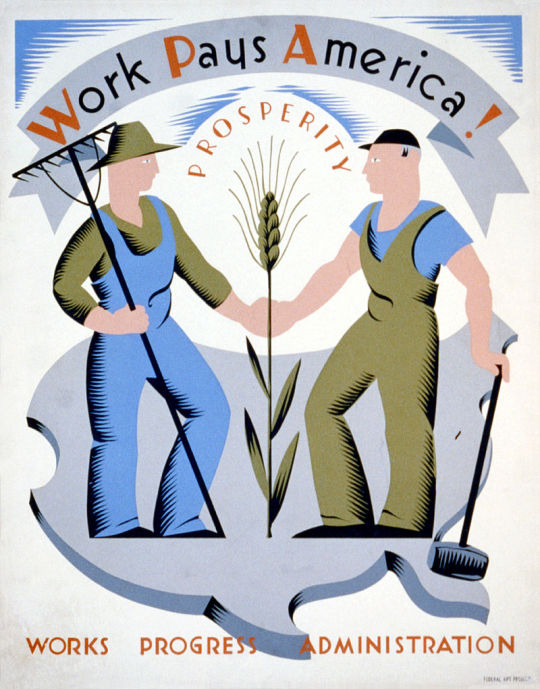

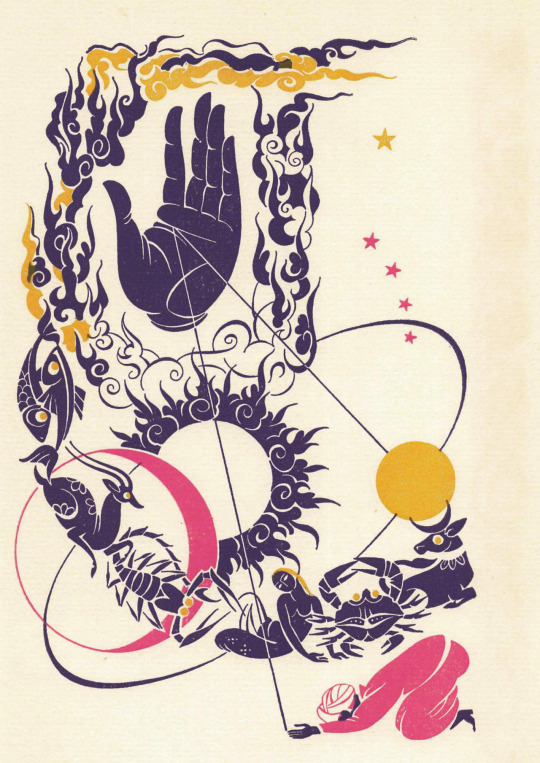

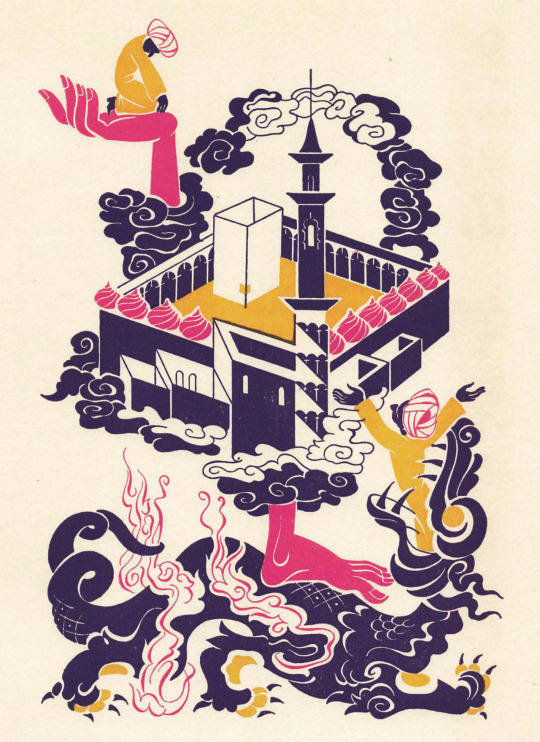
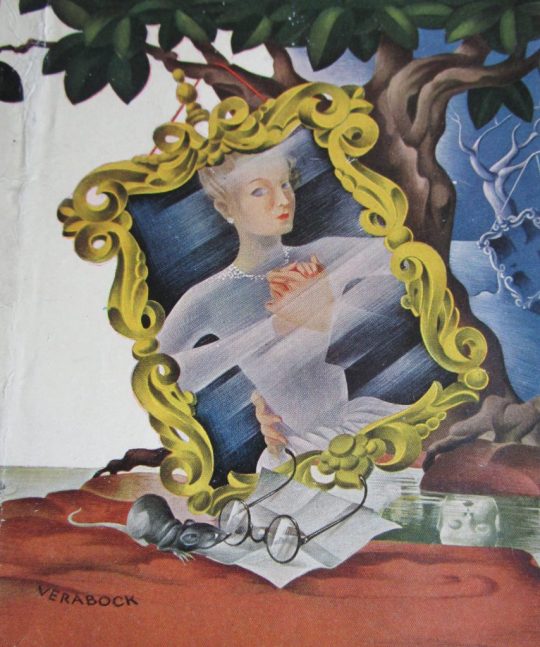
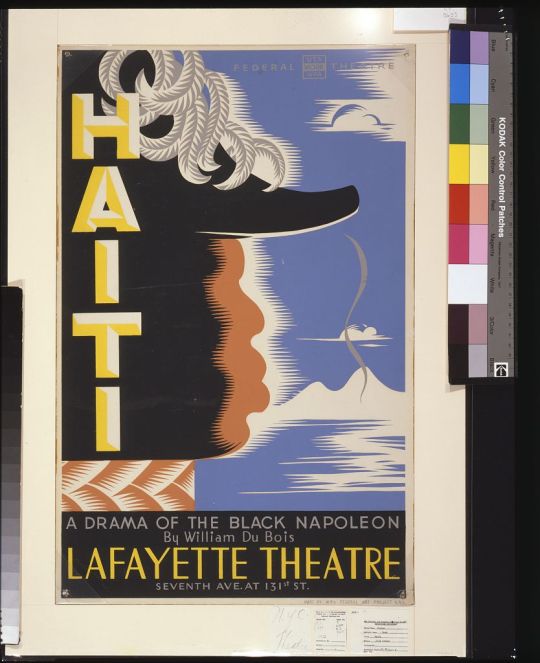


Vera Bock (1904-1973) was a painter, designer, and illustrator best known for her WPA poster design and book illustration.
Bock was born in St. Petersburg, Russia, to an American businessman and a Russian concert pianist. The family escaped in 1917 during the height of the Russian revolution by way of Siberia, China, Japan, and then finally settling in San Francisco, CA. She returned to Europe as a young adult, including a year's stay in England to study printing, photoengraving, manuscript illuminating, and wood engraving. In 1922, she returned to New York to begin her illustration career.
She employed a variety of mediums and materials for her illustration, including relief printing to pen-and-ink drawing to wet-and-dry mixed media painting. She illustrated over 50 books, ranging from children's picture books to an illustrated version of the Koran (pictured at the top). She flourished during the 1930s as part of the WPA poster art program, free to experiment with shapes, simplified forms, repetition and integration of type and image.
She also elevated the possibilities of the paperback novel cover, which was looked down upon as cheap or the realm of the "pulp" - hastily printed, often low-quality. Her illustrations for the mail-order American Crime Club mysteries are evocative, mysterious and expressive. Her decorative, graphic style unifies with narrative and her own cosmopolitan spirit.
#vera bock#women in illustration#illustration#women in art#illustration history#women's history month#book illustration#wpa posters
4 notes
·
View notes
Photo

Our Safe Encounters series of patches were inspired by vintage WPA posters of the 1930’s and 40’s.🌲🚸🌵 👉 Three designs available. These large sized patches are packed with details which made designing these lots of fun. They’re even better up close. 📦 ENJOY FREE SHIPPING 🇺🇸 on orders of $35+ 🌍 on orders of $75+ 🧳 MaidenVoyageClothing.com 🗺 —————————————————— #illustration #patchcollector #maidenvoyageco #maidenvoyageclothing https://www.instagram.com/p/CZh8cOxvqJu/?utm_medium=tumblr
2 notes
·
View notes
Text


Curb Service. 10,000 Current Books. "Convenient, free, time saving. Chicago Public Library, Randolph St. Corridor." Circa 1936 WPA Art Project poster.
Buy Curb Service poster | WPA Posters
#vintagraph#vintage poster#vintage#vintage print#wpa#wpa pool#retro print#book#literacy#book worm#books#library#library life
3 notes
·
View notes
Photo
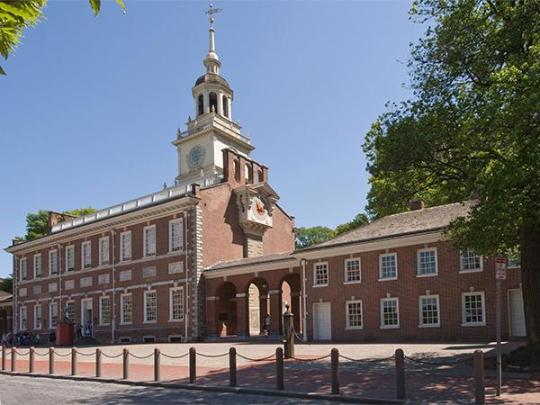
Independence National Historical Park – the Seat of American Democracy
Independence National Historical Park – the Seat of American Democracy: In the heart of Philadelphia where the roots of American Democracy first took hold, we celebrate everything in our nation we hold dear. Independence National Historical Park was built on the spirit of revolution in America, where visitors can experience the story of freedom. Few ideas capture the hearts and imaginations of humans that they take the shape of physical objects with a universal meaning. At least for Americans, no other symbols of individual freedom quite compare with the Liberty Bell. Encompassing 55 acres and 20 urban blocks, these are the grounds where the dream of a free country of sovereign citizens came to fruition. The Liberty Bell, Independence Hall (a UNESCO World Heritage Site), Congress Hall, the Benjamin Franklin Museum, the National Constitution Center, and the Independence Visitor Center are just a few of the places to visit in this historical park – and all are free. The linchpin of this L-shaped park is Independence Hall, a regal 18th-century Georgian edifice set in a 5-acre square in Philadelphia's oldest commercial district. This is also the site of Benjamin Franklin's residence amidst a colonial landscape with historic churches, cemeteries, glorious gardens, and various monuments. Here on these grounds is where both the Declaration of Independence and the Constitution were both deliberated and written, and on which the foundations of our country rest. Philadelphia was the nation's capital from 1790 to 1800, and it was also here that the concept of governance based on the rights of individual citizens was first tested. The Story Behind It All Created by Congress in 1948, President Harry S. Truman signed Public Law 795 on June 28th, effectively creating the park. In 1950, the National Park Service began administering the park, but it wasn't officially established until 1956. Before its establishment, the area suffered a decline, and many buildings not built in the 18th and 19th centuries were demolished in an effort to create a colonial-centric park. Other historic buildings were meticulously restored. The result is a proud reference to historical origins while also retaining a modern edge; a mix of red brick buildings knit together with cobblestone alleys and richly articulated pedestrian areas, pristine lawns, and lovely brick walks. The bell that eventually became the Liberty Bell was originally made in Great Britain, and recast in 1753 to adorn the State House in Philadelphia. It was used as a chime to call members of the Pennsylvania Assembly to meetings. Eventually, it became a symbol of freedom to Civil Rights Advocates, abolitionists, suffragists, immigrants, Native Americans, war protestors, and others who sought a symbol of freedom. It took the cooperation, effort, and devotion of the City of Philadelphia, the National Park Service, and countless private citizens to cultivate this area for the enlightenment and enjoyment of all those who come here. Click here to see the Independence National Historical Park poster. Rob Decker is a photographer and graphic artist who had the rare privilege of studying under Ansel Adams in Yosemite National Park when he was just 19 years old. Now, Rob is on a journey to explore and photograph all of America's National Parks. He's creating WPA-style posters to help people celebrate their own national park adventures — as well as encourage others to get out and explore! Join the growing community of 75k+ National Park enthusiasts to receive insider deals and updates. See why 75k+ National Park fans have already joined... https://national-park-posters.com/blogs/national-park-posters/independence-national-historical-park-the-seat-of-american-democracy?utm_source=rss&utm_medium=Sendible&utm_campaign=RSS
2 notes
·
View notes
Photo




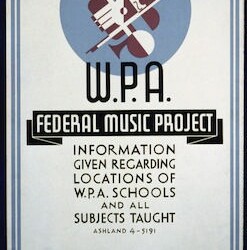
Federal Project Number One — An Introduction
FDR’s federally funded projects to employ and train artists, musicians, writers, and actors during the Great Depression.
This is a topic I have wanted to delve into for a long time, as it is so inherently Steve, and to my great pleasure, it is a topic requested by my much-loved friend and Patreon supporter Joanna. This post will be a brief introduction into what is a massive topic when looking into Steve’s education, employment, and experiences of art during the Great Depression.
The Great Depression, Artists, and FDR
The fallout from the 1929 stock market crash had a devastating effect on the art community. Tens of thousands of writers, artists, musicians, and those in the theatre found themselves out of work, that had been hand-to-mouth at the best of times. Considered ‘nonessential’ their roles had dried up leaving them in dire straits. As an attempt to offset the damage done by the crash, FDR began orchestrating policies and projects to generate work and employment for citizens as an alternative to just providing a dole — including artists as beneficiaries.
An early prototype of this artist employment project was the Public Works of Art Project (PWAP). It ran from December 1933 to June 1934, employed 3,749 artists, and produced 15,663 pieces of art for government building across the country. While on the whole, the project did provide employment with employment at a time of need, its success in comparison to its successor, the Works Progress Administration (WPA), was limited. It did not necessarily identify the most qualified candidates, and the art that was produced was relatively conservative and underwhelming. After the dissolution of the PWAP, a new approach to the issue of employment was developed — this was the better-known New Deal’s Work Progress Administration (WPA).
Federal Project Number One
The new divisions for employment of artists fell under the banner of the Federal Project Number One. This was the name given to a collection of projects that focused on the arts, music, writing, and theatre. The Federal Project Number One took the earlier PWAP’s objects of employing artists to create works for governments buildings and expanded upon it. The vision three-fold:
First off, it was to provide relief to artists and artisans by employing them to create a wide array of materials and services that would benefit the American public at large.
Second, rather than just providing artworks for federal buildings, they were created for public spaces like post-offices, schools. Directors of the projects wanted to take art out of large institutions and bring it to the everyday citizen by putting it in their neighbourhoods. This was achieved through the production of murals in public spaced, funding art classes to both children and adults throughout the country, producing public service material, and putting on free and low-cost public music and theatre performances for those who would not otherwise have had access to them.
Thirdly, the material produced had the goal of buoying public morale during a deeply-trying period. The guidelines for artwork was to “invoke familiar images that spoke of shared values and American progress, including technological wonders, fertile farmlands, small town life, and big city vibrancy.”
The divisions of the Federal Project Number One were as follows:
The Federal Arts Project — This included the production of works of art like posters, murals and freestanding canvases, paintings; as well establishing as staffing new community arts in every region which could host both art exhibits, performances, and art classes for all ages.
The Federal Music Project —This division acted to bring live music to the masses, particularly those who in the past had never had the means to afford admission to traditional venues. They performed many accessible venues including open-air spaces like parks, schools, train stations, concert halls, and anywhere that could host a crowd. The range of music performed was also broad to appeal to new audiences.
The Federal Writers’ Project — This division employed anyone who could write, be it novelists, poets, academics, copywriters, journalists, librarians, or writing teachers. The produced all manner of works, anywhere from 1 to 100-page materials, with a focus on non-fiction. Many were ephemeral in nature and did not last, but some others left a mark on Americans, most notably, a series of guides to America that promoted travel and pride in the country.
The Federal Theatre Project —This division both produced original theatre materials, as well as free or low-cost public performances. Like the music division, they offered these performances in accessible spaces like schools, hospitals, parks, and any spaces it could afford to rent. Performances were also staged in prisons and settlement houses across the country. The production also went beyond the stage, with radio-baed theatre through the Federal Theatre on the Air, and written material through the Living Newspaper.
That was a pretty dry and boring summary of what the WPA and Federal Project Number One, but it gives some of the contextual information behind how the Federal Arts Project and its sibling projects came about. From here I can get into the more interesting and Steve-related content in future posts.
Image Sources
WPA logo | Source
WPA Federal Art Project Exhibition, 1938 | Source
WPA Federal Writers Project, American Guide Week | Source
WPA Federal Theatre Negro Unit, Macbeth | Source
WPA Federal Music Project | Source

This post has been sponsored by Patreon supporter Joanna Daniels —longtime, and beloved follower. She and I would like to, again, dedicate the post to the loving memory of her mother Joan Daniels, who sadly passed away this past year and who is sorely missed. I hope 2019 has been treating you well so far!

#steve rogers#great depression#new deal#federal arts project#works progress administration#wpa#fdr#federal project number one#federal writers project#federal theatre project#federal music project#historically accurate#american history#depression era#1930s#1940s#1930s american#1940s america#captain america#captain america: the first avenger#captain america: the winter soldier#captain america reference#fanfiction#fanfic references#fanfic research#writing#writing resources#writing reference#fanfic resources
22 notes
·
View notes
Text
Color Your World with the Library
Color Your World with the Library
By Neely Tucker
Published May 14, 2020 at 10:39AM
Break out your crayons, markers, colored pens and pencils! The Library has new images, adapted from our collections, for you to color as you wish. Staying within the lines is totally optional.
The coloring pages are part of the Library’s growing package of school activities and learn-from-home material — and just fun stuff to do — that we’ve adapted from our collections since COVID-19. They can be found on the Library’s Families page, along with how-to-draw sessions from Dav Pilkey (of “Dog Man” fame); writing tips from Jason Reynolds, the National Ambassador for Young People’s Literature; and tutorials on how to make a mini book, among others. There’s more on the Engage page, too.
Ready to color? Check out this lovely photo of the Jefferson Building:
The Library’s Thomas Jefferson Building. Photo: Shawn Miller.
Presto, you can color it on this page. Click on the link, print out the image and you’re set!
If you have my (lack of) fine motor skills, you might want to take on something simpler, such as this Works Progress Administration poster advertising a pet show. The coloring book page is all yours. (There are two images on the link; the pooch is the second one.)
“Pet Show,” WPA poster, between 1936-39. Drawing: Arlington Gregg. Prints and Photographs Division.
There are plenty of other pictures to choose from, but perhaps none more challenging than the Library’s mosaic of Minerva. The coloring book page has plenty of room for all the detail you can muster, so don’t rush.
Mosaic of Minerva by Elihu Vedder in the Thomas Jefferson Building. Photo: Carol Highsmith.
Subscribe to the blog— it’s free! — and the largest library in world history will send cool stories straight to your inbox.
Read more on https://loc.gov
0 notes